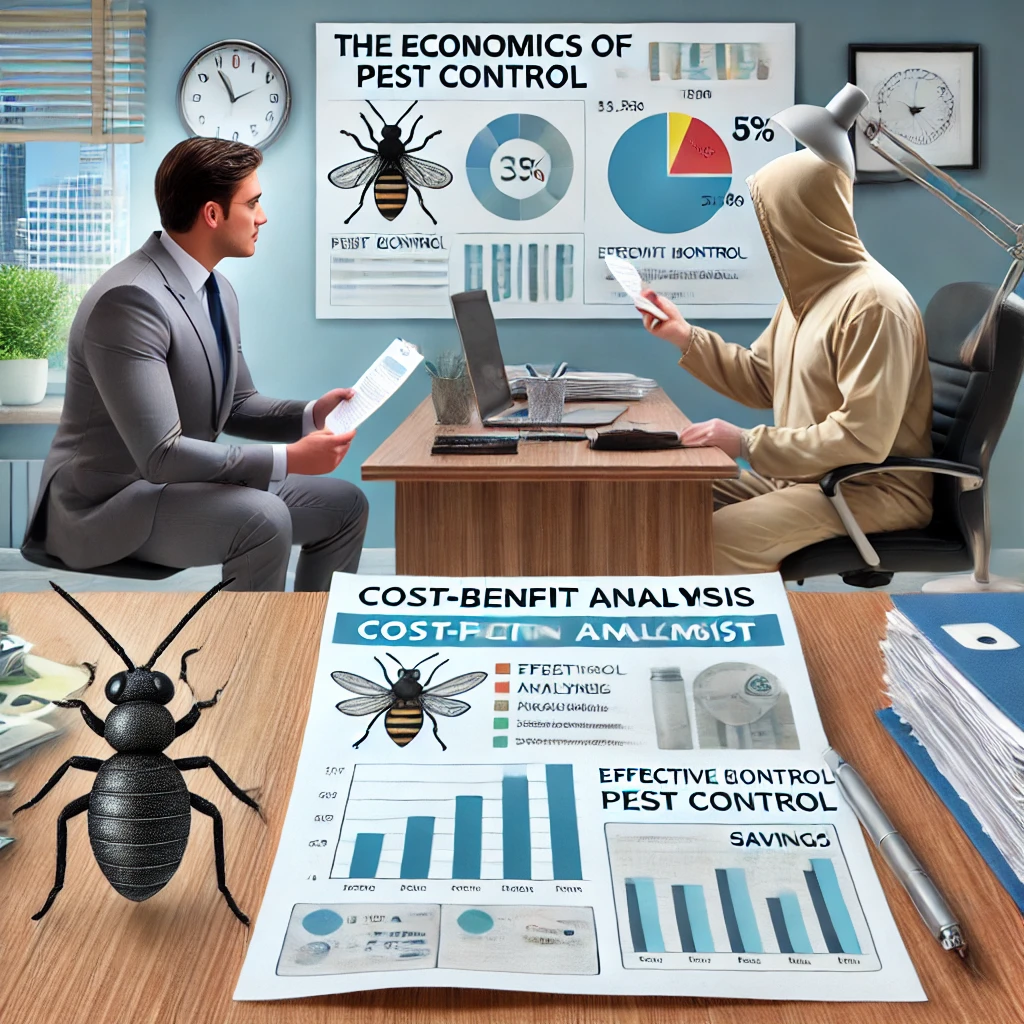
Introduction to Pest Control Economics
Understanding the economics of pest control involves analyzing the costs and benefits associated with pest management strategies for businesses. Effective pest control is crucial for protecting assets, maintaining a clean environment, and ensuring compliance with health and safety regulations. Businesses, whether in retail, food service, or manufacturing, face significant financial impacts from pest infestations, including damage to property, contamination of products, and potential legal penalties. A thorough cost-benefit analysis helps businesses make informed decisions about pest control investments and strategies.
Costs of Pest Infestations
The financial costs associated with pest infestations can be substantial. Direct costs include expenses related to repairing damage caused by pests, such as structural damage, contamination of products, and loss of inventory. For instance, pests like rodents and insects can gnaw through wires, damage equipment, and spoil stored goods, leading to significant repair and replacement costs. Indirect costs also include potential loss of business due to a damaged reputation, customer complaints, and decreased employee morale. Additionally, businesses may face legal and regulatory fines if they fail to meet hygiene and safety standards.
Benefits of Effective Pest Control
Investing in effective pest control measures yields significant benefits. Firstly, it helps prevent damage to property and products, reducing the need for costly repairs and replacements. Secondly, it ensures compliance with health and safety regulations, thereby avoiding fines and legal issues. Effective pest management also contributes to maintaining a positive reputation and customer trust, which is crucial for business success. Furthermore, pest control can enhance employee productivity and morale by creating a cleaner and more comfortable working environment. Overall, the benefits of pest control often outweigh the costs, leading to long-term savings and improved business performance.
Cost-Benefit Analysis for Pest Control Strategies
Conducting a cost-benefit analysis involves comparing the costs of implementing pest control measures against the potential benefits. This includes evaluating the expenses of various pest control methods, such as chemical treatments, traps, and exclusion measures, and comparing them to the anticipated savings from preventing pest-related damage and losses. Businesses should also consider the long-term benefits, such as reduced risk of infestations and improved compliance with regulations. By assessing both the direct and indirect costs and benefits, businesses can determine the most cost-effective pest control strategies and make informed decisions about their pest management investments.
Implementing Cost-Effective Pest Control Solutions
To achieve cost-effective pest control, businesses should adopt a proactive approach that includes regular inspections, preventive measures, and integrated pest management (IPM) practices. Regular inspections help detect potential pest problems early, while preventive measures, such as sealing entry points and maintaining cleanliness, reduce the risk of infestations. Integrated pest management combines multiple strategies, including monitoring, sanitation, and non-chemical controls, to manage pests in a cost-effective and environmentally friendly manner. By implementing these solutions, businesses can minimize pest-related costs and achieve a better return on their pest control investments.
Conclusion
In conclusion, understanding the economics of pest control is essential for businesses to make informed decisions about their pest management strategies. By analyzing the costs and benefits, businesses can identify cost-effective solutions that protect their assets, ensure compliance, and enhance their overall performance. Investing in effective pest control not only prevents damage and losses but also contributes to a healthier and more productive work environment. Ultimately, a well-planned pest control strategy provides significant economic benefits and supports the long-term success of the business.

